| Entries |
| H |
|
Historic Preservation
|
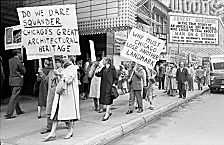
|
The movement began as an effort to ensure the survival of individual buildings of special significance, but its concerns have been broadened, first to include districts and neighborhoods, then to encompass distinctive areas of the natural environment. It is now an integral element of urban planning and design.
Historic preservation gained popular support in Chicago in the 1960s when public concern over massive and indiscriminate destruction of Chicago's built environment developed in response to three trends: (1) government-sponsored “ urban renewal, ” which had resulted in wholesale destruction of some residential areas; (2) construction of high-speed, limited-access expressways financed largely by federal highway funds, which slashed through neighborhoods; and (3) the real-estate boom in response to the demand for increased office space in the Loop.
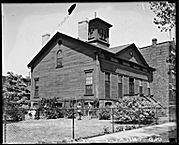
|
This threat to Chicago's architectural heritage brought about the formation of citizens' groups to educate the public and apply pressure to governmental departments and agencies to save the city's architectural legacy. The first was the Chicago Architecture Foundation (CAF), which grew out of the efforts of a group of architects in 1966 to save Glessner House, designed by H. H. Richardson and located at 1800 South Prairie Avenue, by purchasing it. CAF has since become a major force for architectural education in the city, training many volunteer docents and arranging popular tours of architectural highlights. Glessner House, now a separate museum, is the key structure in the city-landmarked Prairie Avenue District. It includes two other late-nineteenth-century houses and the Clarke House, reputedly the oldest house still standing in the city, which is now run as a house museum by the Department of Cultural Affairs of Chicago.
The Landmarks Preservation Council of Illinois (LPCI), which was established in 1971, is an advocacy group that lobbies for historic preservation projects. The LPCI has been closely involved with the disposition of Fort Sheridan in Lake County, which is a National Historic Landmark. It is being developed privately but with a commitment to preserve the buildings and character of the historic fort district.
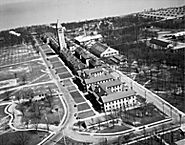
|
The city has had a Commission on Chicago Landmarks (CCL) since 1968. Now part of the city's Department of Planning and Development, it researches the background of properties or districts proposed for landmark status and recommends approval to the Chicago City Council, which then votes on granting such status. As of May 2002, 202 individual structures and sites and 34 districts had been officially recognized as landmarks.
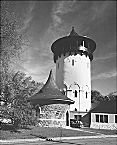
|
Within the network of parks created in the nineteenth century to ring the city— Lincoln, Humboldt, Douglas, Garfield, Washington, and Jackson Parks—there are important preservation projects, including the conservatory in Garfield Park and the receptory and stables of Humboldt Park.
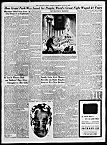
|
The one important landmark on the lakefront is Navy Pier. Opened in 1916, its buildings fell into disrepair as lake shipping declined. The headhouse and east end buildings were given city landmark status in 1977, but only after a protracted fight over how to develop the space was the entire pier extensively rebuilt in the mid-1990s as a popular cultural and recreation center.
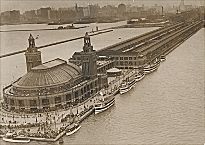
|
One major preservation project that the city has undertaken directly is the restoration of the 1891–1895 Reliance Building at State and Washington. Its glass-dominated facade has fostered the claim that the building is a precursor of modern architecture. The building reopened in 1999 as the European-style Hotel Burnham.
The Encyclopedia of Chicago © 2004 The Newberry Library. All Rights Reserved. Portions are copyrighted by other institutions and individuals. Additional information on copyright and permissions.